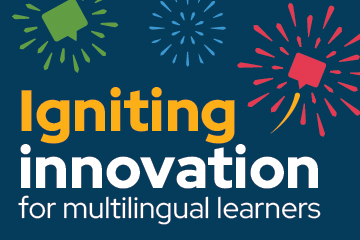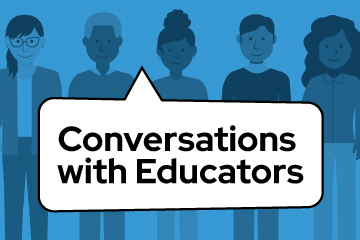Resources/Recursos
Featured Resources



All resources/Todos los recursos
Filter resources by:
Resources/Recursos
Exploring the Long-term English Learner Population Across 15 WIDA States
This research report summarizes findings from a recent WIDA study exploring the potential long-term English learner (LTEL) population across 15 geographically-representative WIDA member states during the period 2009-10 through 2014-15. The findings highlight a continuing need for research that rejects an overly simplistic understanding of the LTEL designation. Additionally, future research should more carefully examine how educational systems, practices, and policies structure the experiences and diverse trajectories of students identified as LTELs.
Published October 2018
Authors: Narek Sarakyan and Sarah Ryan
Released October 2018
STEM Discourse
This WIDA Focus Bulletin explores ways to strengthen reasoning and language in Science, Technology, Engineering, and Mathematics (STEM) education.
Published January 2017
Author: Rita MacDonald
Released April 2017
Including Recently Arrived English Learners in State Accountability Systems: An Empirical Illustration of Models
Based on a U.S. Department of Education guide, these model analyses illustrate procedures a state could use to compare and contrast school-level overall and English learner accountability determinations for proficiency in reading/language arts. These examples are provided only to illustrate how a state could undertake them as part of its efforts to develop and explore a theory of action for assessment of recently arrived English learners.
Resource DetailsReleased March 2017
Providing ELLs with Disabilities Access to Complex Language
This WIDA Focus Bulletin outlines ways in which educators can provide English Language Learners with disabilities access to complex language via classroom activities and engagement opportunities.
Published March 2017
Authors: Lynn Shafer Willner, Cynthia Lundgren, Mira Monroe, Julia Cortada
Released February 2017
Interpretation and Use of K–12 Language Proficiency Assessment Score Reports: Perspectives of Educators and Parents
This paper examine how 18 K–12 educators from 13 states and 12 parents from two states interpret and use score reports from the WIDA ACCESS for ELLs. Educators frequently referred to the proficiency level index of the four language domains of listening, speaking, reading, and writing, and the composite domains to interpret student performance, to make school-level decisions about programming and lesson planning, and to inform district-level budgeting and professional development. Parents found the score report to be helpful, but rarely took additional actions to use its information.
Resource DetailsReleased November 2016
Examining Preschool-aged Dual Language Learners’ Language Use: From a Functional Approach
This study examines oral language development of 14 dual language learners ages 2.5 to 5.5 years in preschools in the Midwestern United States. They engaged in five key language uses: argue, explain, heuristic, recount, and request. Preschoolers 2.5 to 3.5 years only made simple requests or argued to meet their needs; the older cohort demonstrated a wider range of key language uses.
Resource DetailsReleased March 2016
Students with Limited or Interrupted Formal Education (SLIFE)
This WIDA Focus Bulletin focuses on the needs of students who have limited or interrupted formal education (SLIFE). Because the vast majority of students in this group are enrolled in grades 6 through 12, we will focus on those grade levels. However, many of the tips and suggestions can be applied in lower grade levels as well. Throughout the bulletin we will explore academic and social-emotional factors that may affect this group of students, examine the benefits of building community partnerships, address how to assess student readiness levels, and offer a checklist of considerations for instructional planning.
Published May 2015
Authors: Lauren Keppler, Lucia Morales, Julia Cortada, Maria Austin
Released June 2015
Evaluating Teacher Effectiveness Using ACCESS for ELLs
Regardless of the growth model, aggregate test-score-based models of student growth require large and longitudinally connected samples of student data. When sample sizes are small it becomes impossible to reliably estimate and disentangle district, school and teacher effects from student growth data.
Published June 2015
Author: Narek Sahakyan
Released June 2015
Examining Relationships Between Alternate Access and State Alternate Assessments
This report examines how Alternate ACCESS for ELLs serves as a tool that identifies English proficiency attainment for English learners with significant cognitive disabilities.
Published December 2014
Author: H. Gary Cook
Released December 2014
Technology in the Classroom
This WIDA Focus Bulletin addresses how English Language Learners engage with technology within the classroom.
Published October 2014
Authors: Meagan Rothschild, Julia Cortada
Released September 2014
Examining District-Level Growth Using ACCESS for ELLs
This research report provides a description of a study examining school districts in the WIDA Consortium whose English language learners (ELLs) exhibit consistently high growth on the ACCESS for ELLs (ACCESS) assessment.
Published August 2014
Authors: Narek Sahakyan, H. Gary Cook
Released August 2014
WIDA MODEL Technical Report Grades 6-8 and 9-12
This 2012 report describes the development, validity and reliability of the WIDA MODEL assessment for Grades 6-8 and 9-12.
Resource Details View Download NowReleased July 2014
American Indian English Language Learners
This WIDA Focus Bulletin explores the integral connection between language and culture for American Indian English Language Learners.
Published May 2014
Authors: Rosalie Grant, Paula White, Julia Cortada, Sookweon Min
Resource Details View Download Now
Released May 2014
High Quality Professional Development for English Language Learners
This report describes key components of high quality professional development for educators of English language learners.
Published May 2014
Author: Daniella Molle
Released May 2014
Collaborative Learning for English Language Learners
This research brief reports preliminary results from a study of teachers’ successful experiences engaging ELLs in collaborative learning with peers.
Published May 2014
Resource Details View Download NowReleased May 2014
Implementation of the English Language Proficiency Standards Across the WIDA Consortium
This paper finds that many educators see the WIDA English language proficiency standards as a tool that can guide them in differentiating instruction and supporting language development among English language learners.
Resource DetailsReleased November 2013
English Language Arts
The purpose of this WIDA Focus Bulletin is to provide guidance to teachers of English language arts (ELA) who are implementing the Common Core State Standards (CCSS) and working to respond to the specific needs of ELLs. In their treatment of academic language (or the language of school), the CCSS represent a departure from existing content standards.
Published November 2013
Authors: Daniella Molle, Mariana Castro, Julia Cortada, Leslie Grimm
Released November 2013
Tool to Evaluate Language Complexity of Test Items
This paper focuses on the creation of an instructional hyper textbook that serves as a personal environment for learning a less-commonly-taught language, Turkish in this case. It shows how digital personal environments can advance self-regulated language learning in tandem with more formal learning strategies.
Resource DetailsReleased July 2013
Implementation of the English Language Proficiency Standards Across the WIDA Consortium
This study examined the ways in which educators across the WIDA Consortium use WIDA’s English language proficiency standards, and in particular the model performance indicators (MPIs).
Published May 2013
Author: Daniella Molle
Released May 2013
Title III National Evaluation Supplemental Report
This report addresses three primary questions:
1. How do you determine a meaningful English language performance standard?
2. How do you establish a realistic, empirically anchored time frame for attaining a given ELP performance standard?
3. How can states take into account English learners’ English language performance level when setting academic progress and proficiency expectations?
Published May 2013
Resource Details View Download NowReleased May 2013




